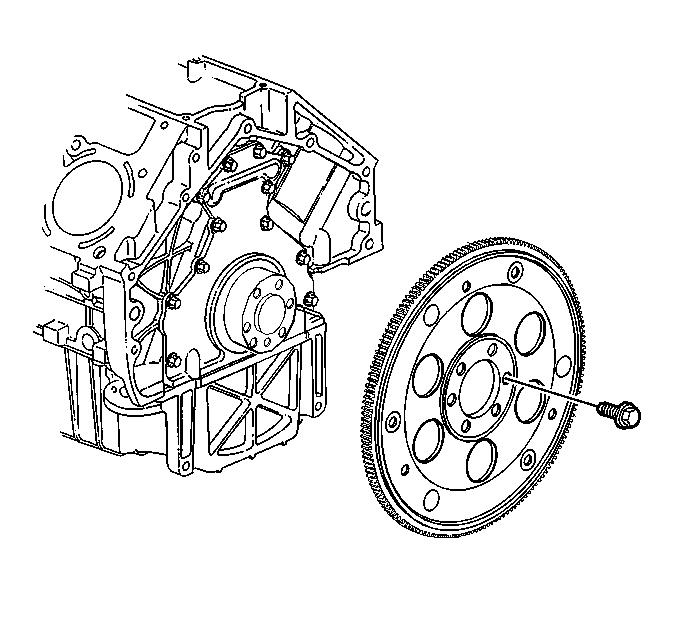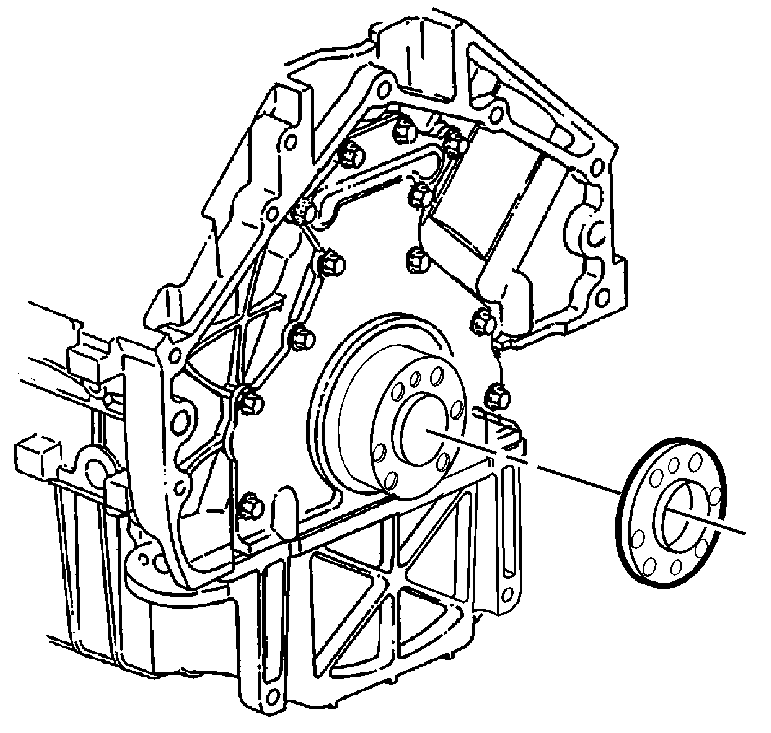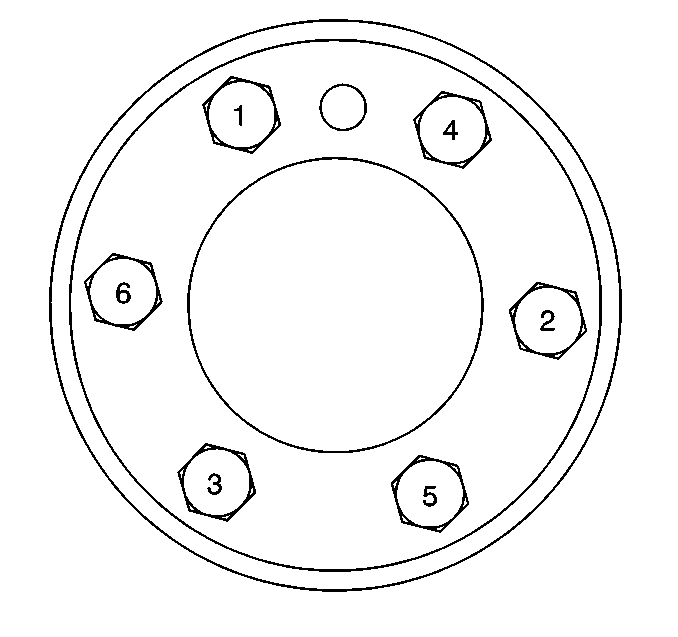For 1990-2009 cars only
Removal Procedure
- Remove the automatic transmission, if equipped. Refer to Transmission Replacement for the 4L60-E transmission or Transmission Replacement for the 4L80-E transmission.
- Remove the engine flywheel bolts.
- Remove the automatic transmission engine flywheel.
- Clean and inspect the engine flywheel. Refer to Engine Flywheel Cleaning and Inspection .
- Install 2 M11x1.5 mm bolts (1) to the threaded holes of the spacer, if applicable.
- Rotate the bolts clockwise to remove the spacer.
- Remove the spacer from the rear of the crankshaft, if applicable.

Important: Note the position and direction of the engine flywheel before removal.

Installation Procedure
Important:
• The flywheel does not use a locating pin for alignment and will not initially seat against the crankshaft flange or spacer (if applicable), but will be pulled onto the crankshaft by the engine flywheel bolts. This procedure requires a three stage
tightening process. • Certain applications (4.8 L manual transmissions or all 6.0 L) require a spacer and longer bolts for proper flywheel position.
- Install the spacer (if applicable) onto the rear of the crankshaft.
- Install the automatic transmission engine flywheel to the crankshaft.
- Apply threadlock to the threads of the flywheel bolts. Refer to Adhesives, Fluids, Lubricants, and Sealers for the correct part number.
- Install the engine flywheel bolts.
- Tighten the engine flywheel bolts a first pass in sequence to 20 N·m (15 lb ft).
- Tighten the engine flywheel bolts a second pass in sequence to 50 N·m (37 lb ft).
- Tighten the engine flywheel bolts a final pass in sequence to 100 N·m (74 lb ft).
- Install the automatic transmission. Refer to Transmission Replacement for the 4L60-E transmission or Transmission Replacement for the 4L80-E transmission.


Important: Longer flywheel bolts must be used on applications using a flywheel spacer.
Notice: Refer to Fastener Notice in the Preface section.

Tighten
